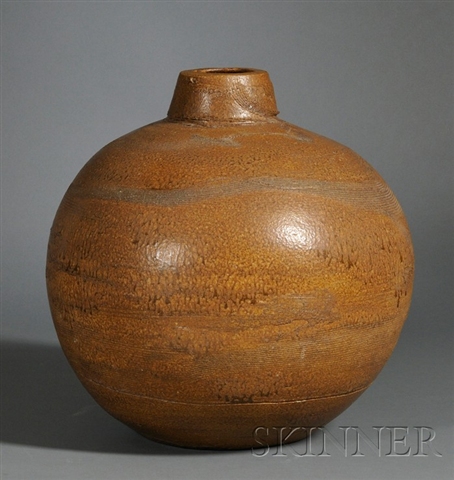Maynard Tischler: New Work: A Year of Woodfired Ceramics
June 16 – August 5, 2005
Rocky Mountain News: Ceramist Maynard Tischler has become known for making objects that reflect the rugged side of life: trucks, bears, garden tools (so lifelike you swear you smell grass), rocket ships, and now, tanks. But although this sculptural and downright ironic work – how else to describe a really tough object depicted in such fragile material – attracts attention and is incredibly difficult to construct and fire, Tischler also is a master of the vessel, adding unusual elements to pieces so that they bridge the two traditional forms of expression in clay.
That is apparent in “Maynard Tischler: A Year of Woodfired Ceramics,” a luminous exhibition on view through Aug. 5 in the Victoria H. Myhren Gallery at the University of Denver. Tischler for years has taught at DU’s School of Art and Art History and been an administrator there (including this year, as interim director during a colleague’s sabbatical).
But last year, Tischler pulled back to one course so he could meet a tough schedule of finishing ceramic works in a huge wood-fired kiln at the University of Iowa. Four times in 15 months, Tischler made the trek to Iowa to submit dozens of works to the lengthy and precarious process of wood-firing. His friend professor Chuck Hindes and his students became part of the process. The result is this exhibition, which Tischler organized and installed days after returning from the final trip. And if the tanks are show-stoppers – there are two, on pedestals in the middle of the gallery, looking ready to roll into action – the smaller pieces that line the walls deserve careful study.
Tischler has used slabs and shards of clay to create a bold lattice-work pattern for the rims of bowls, or for the sides of vases obviously not designed to hold too much water. Throughout, the pieces exude a strength that adds attitude to the finished product while balancing some of the whimsy the artist occasionally builds in (a fly on the side of a cup, a set of small drinking vessels he terms cough syrup cups). Tischler says he used only three colors of glaze, and the result is mainly earth-toned works, though some are spiked with color. To counter that, he has hung several tapestries he made in the 1970s of subjects that reflect an interest in the land and the road.
The result is a graceful but solid show, satisfying because the variety still is linked by a common aesthetic. If anything detracts, it is giant “do not touch” signs and barriers made of plastic webbing. There has to be a way to protect such work without smothering it or distracting the eye with placards. The Myhren, with a new gallery director soon to come on board, might want to investigate alternatives, because all those signs did was disrupt the serenity of the space.
—Chandler, Mary Voelz. “DELICATE MATERIALS FORM RUGGED OBJECTS.” Rocky Mountain News [Denver, CO] 1 July 2005: 21D.



